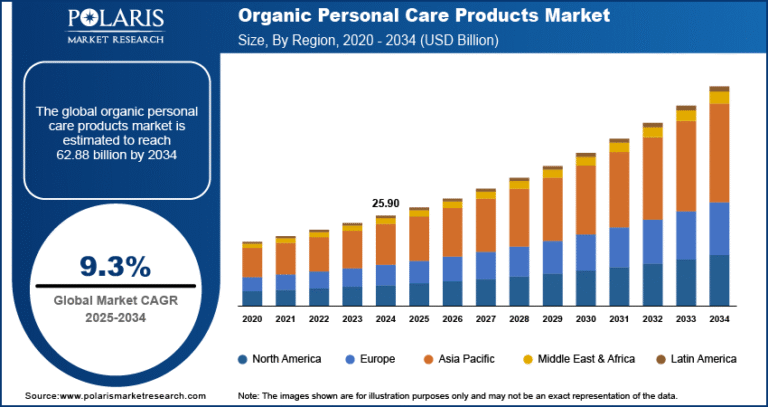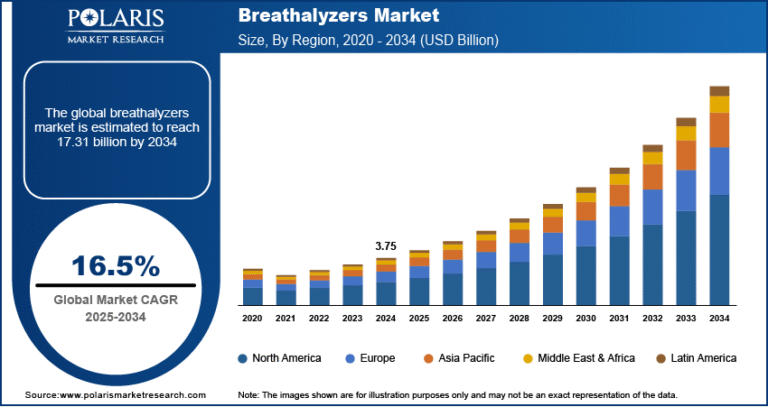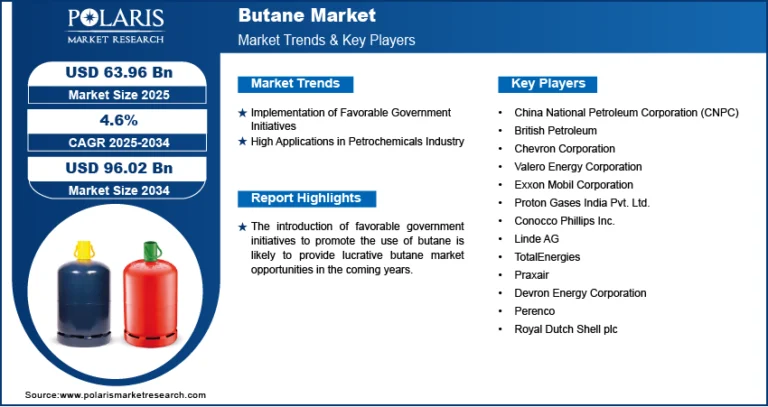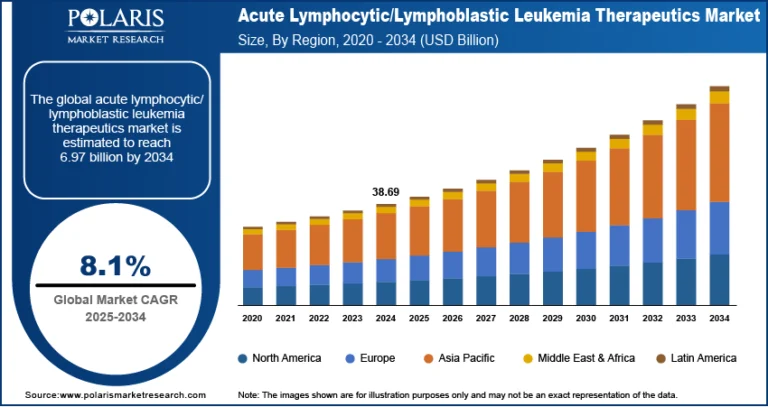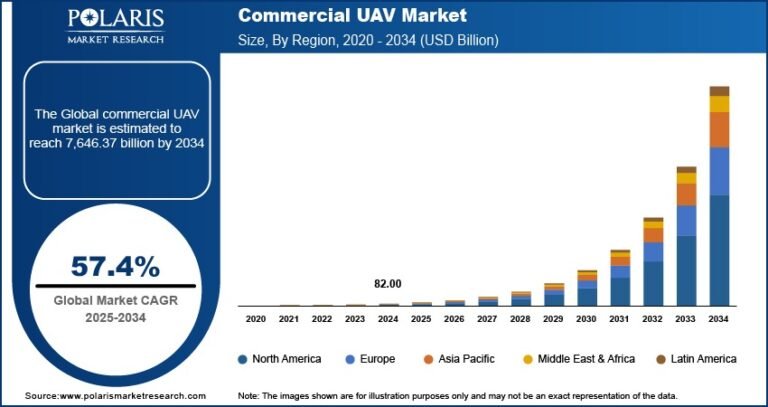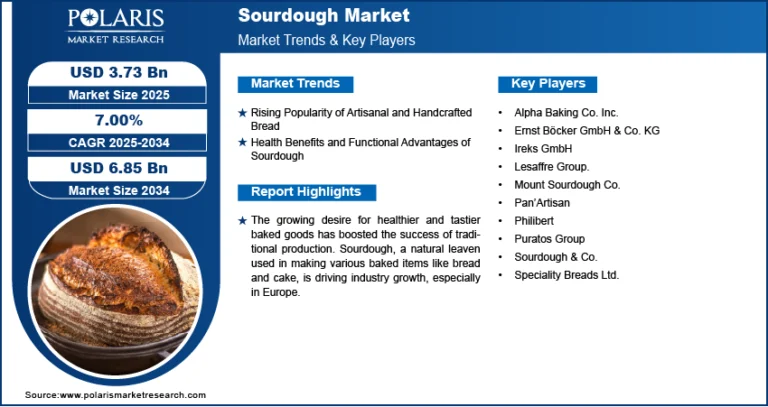Alcoholic Beverages Market Size Worth $ 4210.30 Billion By 2034 | CAGR: 9.50%
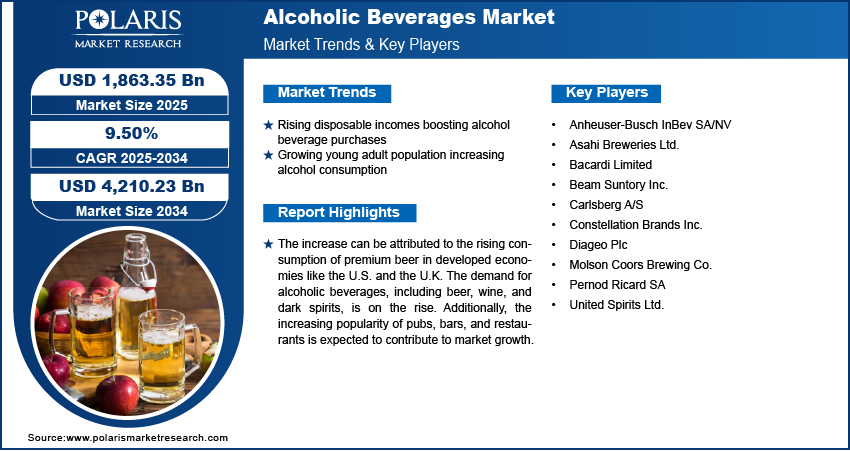
The global Alcoholic Beverages Market was valued at USD 1,705.11 billion in 2024 and is expected to grow at a CAGR of 9.50% from 2025 to 2034. Expanding social drinking culture and premiumization trends are supporting steady market growth.
Alcoholic Beverages Market Trends & Insights:
- Premiumization and Craft Offerings: Consumers are increasingly opting for premium, craft, and artisanal alcoholic beverages, particularly in the spirits and beer segments, driven by taste and exclusivity.
- Health-Conscious Innovations: There’s a rising trend toward low-alcohol, organic, and low-calorie drinks, aligning with the global health and wellness movement.
- E-commerce & Digital Shift: Online sales and digital marketing of alcoholic beverages have surged post-pandemic, influencing consumption patterns and brand reach.
- Sustainability & Packaging Innovation: Eco-friendly packaging, recyclable materials, and sustainable production practices are gaining importance as environmental concerns grow.
Market Overview:
The alcoholic beverages market is characterized by a wide range of product offerings including beer, wine, and spirits. Shifting consumer preferences, increasing disposable income, and evolving lifestyle habits are propelling market dynamics. The influence of Western drinking culture, especially in emerging economies, has further fueled demand across demographic segments.
In recent years, the sector has witnessed a notable transformation due to innovation in flavors, formats, and packaging. Additionally, regulatory relaxations, tourism recovery, and evolving retail distribution channels are enabling faster adoption and market penetration worldwide.
Request For Sample:
Market Size & Forecast:
- Market Size (2025): USD 1863.35 billion
- Revenue Forecast (2034): USD 4,210.23 billion
- CAGR (2025–2034): 9.50%
Market Challenges:
· Stringent Regulations and Taxation:
Alcoholic beverages are subject to heavy government regulations, including age restrictions, advertising bans, labeling laws, and high excise duties, which vary across regions and can limit market expansion and profitability.
· Shifting Consumer Preferences:
Increasing health consciousness is driving a shift away from traditional alcoholic beverages toward low-alcohol, non-alcoholic, or functional alternatives, posing a challenge to established brands and product categories.
· Supply Chain Disruptions and Raw Material Volatility:
Factors such as crop failures, geopolitical tensions, and inflation impact the availability and cost of raw materials like barley, grapes, and hops, disrupting production and affecting pricing strategies.
Conclusion:
Fueled by premiumization, health-driven innovations, and digital expansion, the alcoholic beverages market is set for robust growth, offering vast opportunities across segments, channels, and emerging global regions.

